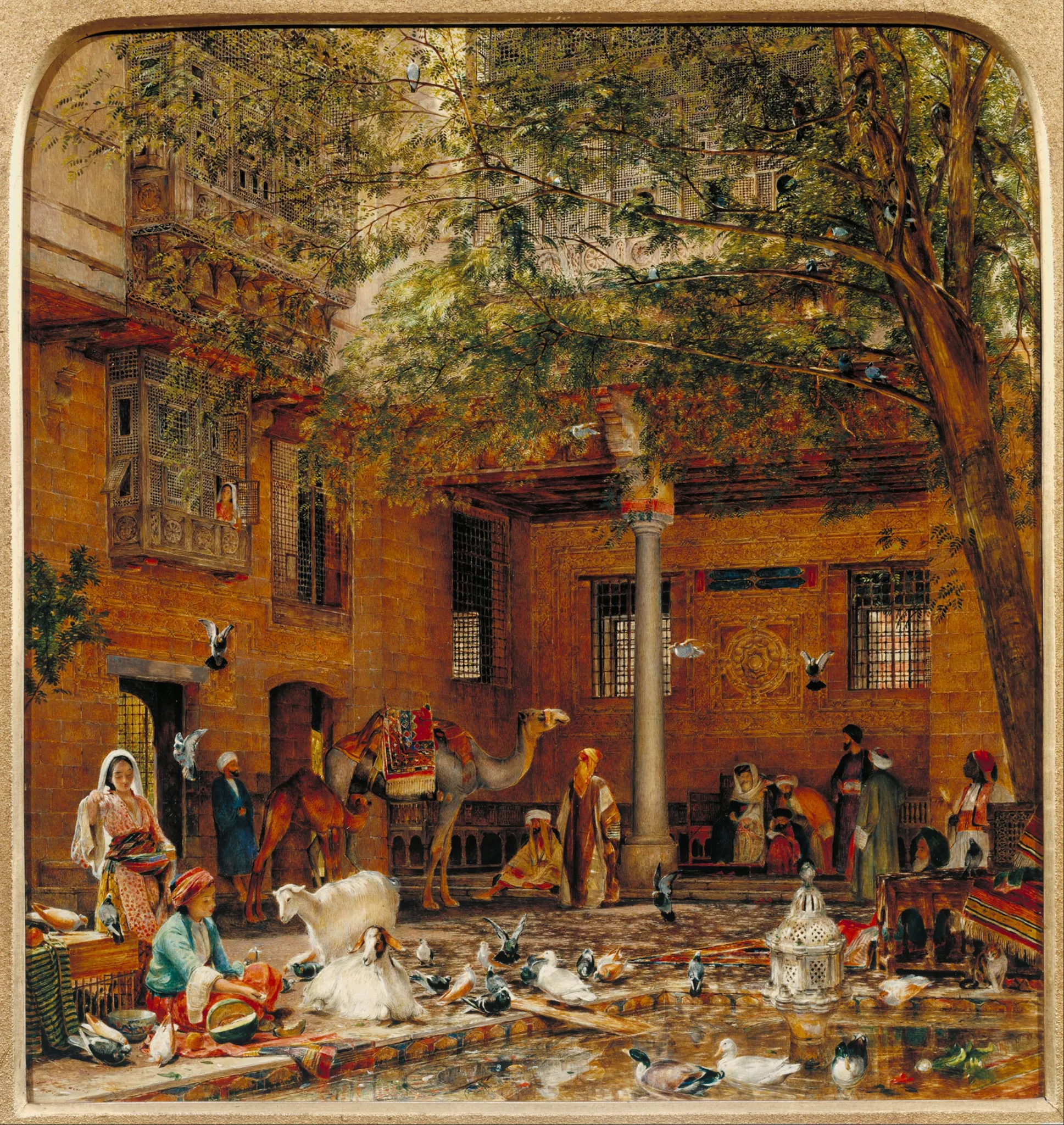Coptic Christianity has been a mystery to many people around the world, even though it has been around for centuries. This beautiful and vibrant religion is vastly different from any other sect of Christianity. In this article, we will explore the history, beliefs, and practices of the Coptic Orthodox Church, and provide an in-depth look at its impact on Christian tradition. Join us on this fascinating journey and discover the richness of one of the most significant religious traditions in the world.
Overview of Coptic Christianity

Coptic Christianity is an ancient form of Christianity that originated in Egypt. It is closely tied to the Coptic Orthodox Church, which is the largest Christian group in Egypt and has a worldwide following of approximately 20 million people. Coptic Christians are part of a distinct community with a unique language, history, and culture.
Here are some key aspects of Coptic Christianity:
-
Language: Coptic is the liturgical language of the Coptic Orthodox Church and the language of the Coptic people. It is based on the ancient Egyptian language and uses the Coptic alphabet, which is derived from the Greek alphabet.
-
History: Coptic Christianity dates back to the first century AD, when Christianity was brought to Egypt by St. Mark the Evangelist. The Coptic Church has survived centuries of persecution and is one of the oldest and most enduring Christian communities in the world.
-
Beliefs: Coptic Christians believe in the Holy Trinity and the divinity of Jesus Christ. They also believe in the sacraments, including baptism, confirmation, confession, and the Eucharist. Coptic Christians have a strong devotion to the Virgin Mary and the saints.
-
Liturgy: Coptic liturgy is rich with chants, hymns, and prayers that date back to early Christianity. The liturgy is conducted in Coptic and includes the celebration of the Eucharist.
-
Art and Iconography: Coptic art is known for its elaborate iconography, which includes depictions of Biblical and historical scenes, as well as images of saints and other religious figures.

Overall, Coptic Christianity is a unique and rich tradition that has endured for centuries. Despite facing persecution and challenges, the Coptic community remains a vibrant and important part of the wider Christian world.
Origins and History of the Coptic Church
The Coptic Church is an ancient Christian Church that has been in existence since the early centuries of Christianity. The word “Coptic” comes from the Greek word “Aiguptos,” which means “Egyptian.” Thus, the Coptic Church is the Egyptian Christian Church.
The origins of the Coptic Church can be traced back to the apostolic times, during the first century AD. According to tradition, the evangelist St. Mark is credited with founding the Church in Egypt. It is believed that he arrived in Egypt during the reign of the Roman emperor Nero, sometime between 54 and 68 AD. He preached the Gospel and established a Christian community in Alexandria, which soon spread throughout Egypt.
The Coptic Church became independent from the Church of Rome in the fifth century AD. This was due to theological differences regarding the nature of Christ. The Coptic Church rejected the Council of Chalcedon in 451 AD, which declared that Jesus Christ had two distinct natures, one human and one divine. The Coptic Church believed that Jesus Christ had a single nature that was both human and divine. This led to a schism between the Coptic Church and the rest of the Christian Church.
The Coptic Church was an integral part of the early Christian Church and played a significant role in the development of Christian theology. The Church produced many notable theologians and scholars, including St. Athanasius, who is known for his defense of orthodox Christian doctrine against the Arian heresy.
Over the centuries, the Coptic Church faced persecution and discrimination, especially during the Islamic conquest of Egypt in the seventh century AD. Despite this, the Church continued to flourish and grow. Today, the Coptic Church has millions of followers worldwide, with the largest congregations of Coptic Christians found in Egypt.
In conclusion, the Coptic Church is an ancient Christian Church that has its roots in the apostolic times. It was founded by St. Mark, an evangelist who arrived in Egypt in the first century AD. The Church played a significant role in the development of Christian theology and produced many notable theologians and scholars. Despite facing persecution and discrimination throughout its history, the Coptic Church continues to thrive and grow, with millions of followers worldwide.
Coptic Beliefs and Teachings
Coptic Christianity is a sect of Christianity that originated in Egypt and has a rich history spanning over centuries. This branch of Christianity has unique beliefs and teachings that set it apart from other Christian denominations. Here, we will take a closer look at some of the key beliefs and teachings of Coptic Christianity.
-
The Trinity
Coptic Christians believe in the Trinity – one God, who is made up of three distinct persons; the Father, the Son, and the Holy Spirit. This belief mirrors that of mainstream Christianity. -
The Incarnation
One of the key beliefs of Coptic Christianity is the incarnation, which refers to the divine nature and human nature of Jesus Christ. Coptic Christians believe that Jesus was fully divine and fully human, and that his divine nature was not separate from his human nature. -
The Bible
Coptic Christians hold the Bible in high regard and believe that it is the inspired word of God. They also recognize several non-canonical books, including the Book of Enoch and the Testaments of the Twelve Patriarchs. -
Sacraments
Coptic Christians celebrate seven sacraments, including baptism, confirmation, holy matrimony, reconciliation, anointing of the sick, holy orders, and the Eucharist. -
Saints and Angels
Coptic Christians venerate Saints and Angels and believe that they can intercede on behalf of the living. They also believe in the existence of demons and evil spirits. -
Eschatology
Coptic Christians believe in a final judgment at the end of time, the resurrection of the dead, and eternal life in heaven or hell. They hold that the judgement will not be based on deeds alone, but will be tempered by God’s mercy.
The beliefs and teachings of Coptic Christianity are steeped in tradition and are strongly influenced by early Christian theology and practices. These beliefs are passed down from generation to generation and are at the core of the Coptic community. Understanding the tenets of Coptic Christianity gives a deeper insight into the faith and its practices.
Coptic Liturgy and Worship

Coptic Christianity is one of the oldest Christian communities in the world and has a distinct liturgical tradition that has been maintained throughout history. Coptic liturgy and worship are heavily influenced by ancient Egyptian traditions and is carried out in the Coptic language, also known as the language of the pharaohs.
Coptic liturgy is centered on the Eucharist, which is held as the pinnacle of Christian worship. The Coptic Orthodox Church celebrates seven sacraments, including baptism, confirmation, confession, ordination, marriage, anointing of the sick, and the Eucharist. Each of these sacraments is imbued with ancient Coptic symbolism and practices rooted in the church’s history.
The Coptic liturgical calendar is also unique. It follows the ancient Egyptian calendar, which is divided into 13 months, with 12 months of 30 days and an additional five or six-day month added every four years. This calendar has a system of leap years and began on August 29, 284 CE, the year of Diocletian’s accession to the Roman throne.
Coptic services are led by a bishop or priest who is distinguished by a black robe, white collar, and a bishop’s staff. The congregation, consisting of men and women seated on separate sides of the church, stands for most of the service. The worshipers participate by singing hymns, practicing prayers, and receiving the sacrament.
The most significant Coptic liturgical service is the Holy Liturgy of St. Basil, which is celebrated on Sundays and feast days. This service is characterized by its unique music, the deep intonation of the liturgical verses, and the use of different musical instruments such as the cymbals and triangles, which are used to create a lively and joyful atmosphere.
One of the most famous Coptic customs of worship is the use of incense. It is used to purify the church and as a symbol of the prayers that rise to heaven. The faithful prostrate themselves before the altar and kiss the cross during the Eucharist, which represents their acceptance of Christ’s sacrifice on the cross.
« Exploring Jesus’ Role as a Rabbi and Religious Leader in History and Scripture
Exploring the Debate: Did Jesus Follow a Vegetarian Diet? »
In conclusion, Coptic liturgy and worship are significant aspects of the Coptic Orthodox Church’s faith and history. Coptic communities all over the world maintain their traditions and rituals that date back thousands of years. The Coptic Church’s emphasis on ancient Egyptian culture and tradition in its liturgy and worship distinguishes it from other Christian communities, making it one of the oldest and most unique in the world.
Coptic Art and Iconography
Coptic art and iconography are among the defining features of Coptic Christianity. With unique styles and symbols, Coptic art and iconography have been used to express the faith and theology of the Coptic Orthodox Church for centuries. Here are some key points to help you understand this fascinating aspect of Coptic Christianity:
- Coptic art refers to the visual arts produced by Coptic Christians, including paintings, sculptures, and textiles.
- Iconography is a form of Coptic art that focuses on religious images, often painted on wood or cloth. These icons depict scenes from the Bible, the lives of saints, and other religious themes.
- Coptic art and iconography use a variety of symbols and colors to convey theological themes. For example, gold is used to represent the divine, white symbolizes purity, and red represents sacrifice.
- Coptic icons often depict a frontal view of the figure, with large eyes and stylized features. This style of iconography is known as the “Coptic style,” and is distinct from the more realistic styles of Western art.
- Coptic art and iconography are associated with Coptic liturgy and worship. Icons are often placed in the sanctuary of the church, and are used during worship services and private devotions.
- Coptic art and iconography have been developed over centuries, and have been influenced by a variety of traditions, including Hellenistic, Roman, and Egyptian art.
Coptic art and iconography are deeply rooted in the history and theology of the Coptic Orthodox Church. With rich colors, stylized figures, and powerful symbols, they provide a powerful visual expression of the faith.
Persecution of Coptic Christians

Persecution of Coptic Christians is a sadly familiar theme for those who follow news from the Middle East. The Coptic Orthodox Church, founded in Alexandria, Egypt, is one of the oldest Christian communities in the world, dating back to the first century. However, in recent decades, Copts have experienced a rising trend of violence and discrimination, especially in Egypt, where they represent about 10% of the population.
The root of the persecution comes from a mix of political, social, and religious factors. Historically, Copts served as a minority in a country with an Islamic majority. In 1952, the Egyptian Revolution led to the end of monarchy and secularization of the state. This transition was turbulent for the Copts, as they were able to practice their faith and participate in society to some extent under the monarchs, but were regarded with suspicion by the new regime.
In the following decades, the situation of the Copts improved and worsened depending on the political climate. Leaders like Anwar Sadat and Hosni Mubarak promised to protect them, but Islamic extremism, which often targets Copts, grew stronger. Additionally, the spread of Salafist ideology among some younger Muslims led to a more extreme sectarianism.
During the 2011 revolution in Egypt, the Copts played a significant role in supporting the uprising against President Hosni Mubarak. They found common cause with liberal and secular Egyptians, calling for democracy and pluralism. However, the subsequent political instability in the country unleashed a new wave of violence against the Copts. For example, on May 7, 2011, a Coptic church in Cairo was attacked, killing 27 people and injuring 300 more.
Sadly, such acts of violence are not isolated incidents. Copts face discrimination in many sectors of society, such as employment, education, and politics. They also report being targets of religious insults and physical assaults. Generally, the government’s response to these attacks and discrimination is inadequate, with many cases going unpunished.

The Copts have responded with resilience and faith, holding onto their identity and heritage through the centuries. However, the violence and discrimination they face tarnish the image of Egypt as a diverse and tolerant society. As long as the root causes of the problem remain, Copts will continue to feel vulnerable and marginalized.
Contemporary Coptic Christianity
Contemporary Coptic Christianity is a fascinating and complex topic that encompasses a wide range of social, cultural, and political issues. At its core, however, contemporary Coptic Christianity is the faith and practice of the Coptic Orthodox Church—a church that has been in existence for over 2,000 years.
In recent decades, the Coptic Orthodox Church has faced a number of challenges, including religious persecution, political instability, and demographic changes. In Egypt, Coptic Christians make up around 10% of the population, and they have historically faced discrimination and violence at the hands of the Muslim majority.
Despite these challenges, however, the Coptic Orthodox Church has continued to thrive and grow, both in Egypt and in countries around the world with large Coptic diaspora communities. Today, there are an estimated 15-18 million Coptic Orthodox Christians worldwide, with the largest numbers living outside of Egypt in countries such as the United States, Canada, Australia, and Europe.
One of the most notable aspects of contemporary Coptic Christianity is its strong sense of identity and community. Copts see themselves as an ancient and distinct faith, with a rich history and tradition that sets them apart from other branches of Christianity. This sense of identity is reflected in everything from Coptic art and iconography to the use of the Coptic language in liturgy and prayer.

At the same time, Coptic Christianity is also a dynamic and evolving tradition, with new movements and expressions of faith emerging all the time. One recent example is the rise of Coptic-Arabic rap music, which has become popular among young Copts in Egypt and beyond. This music often addresses issues of faith, identity, and social justice, and has helped to create a new space for creative expression and activism within the Coptic community.
Despite these positive developments, however, Coptic Christians continue to face significant challenges and obstacles. In addition to religious persecution, they must also navigate issues such as emigration, assimilation, and interfaith relations. Nevertheless, the resilience and vitality of the Coptic Orthodox Church continue to inspire and engage people of all backgrounds and faiths around the world.
To sum up, this section highlighted some of the challenges and opportunities faced by contemporary Coptic Christianity. Despite facing discrimination and persecution, the Coptic Orthodox Church remains a vibrant and dynamic faith tradition, with a rich history and culture that continues to inspire and engage people all over the world.












